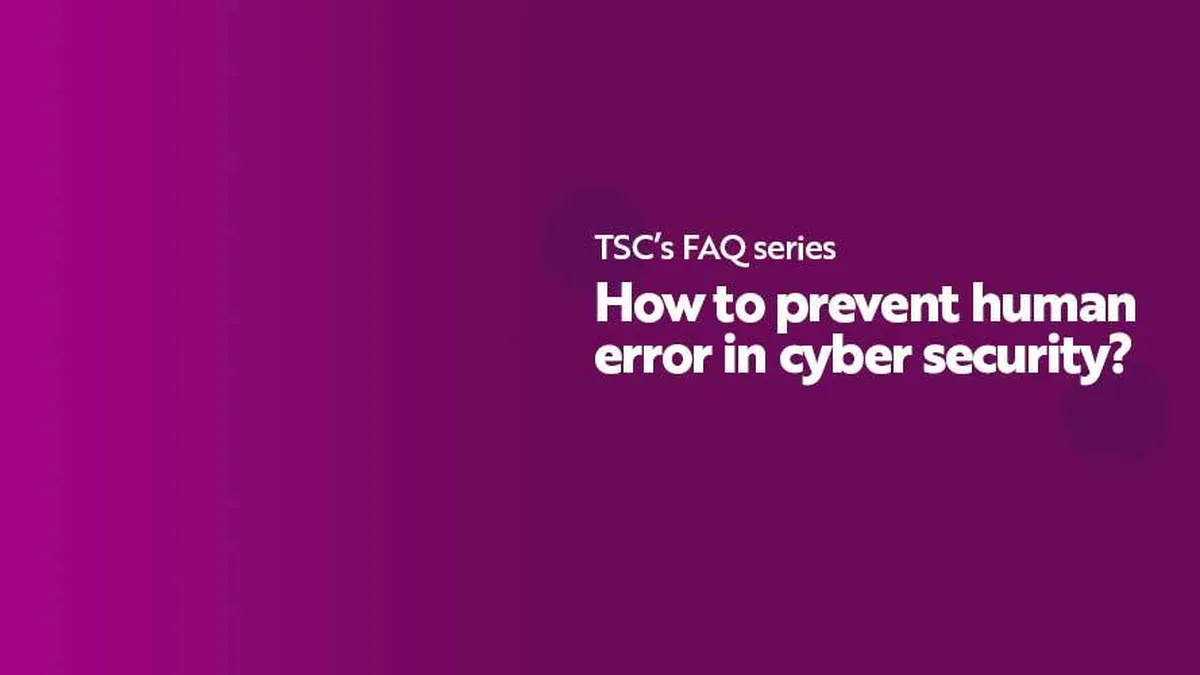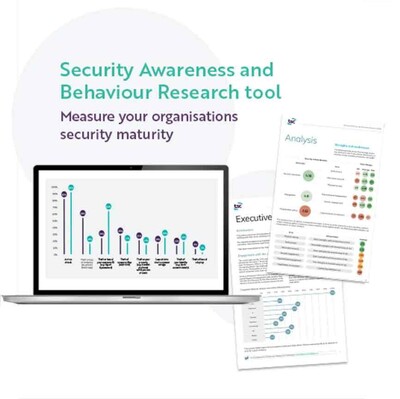
- Employee awareness
- 5 min read

Technological advancements are crucial in fortifying your organisation’s defences. However, human error remains one of the weakest links in the cyber security chain – and it is getting even murkier for your employees to stay safe online.
Whether it's negligent mistakes like leaving their desk and computer unlocked when stepping away or falling victim to phishing, employees can unknowingly compromise an organisation's security posture.
To minimise these risks, cyber security leaders and decision-makers must prioritise raising the threat and risk awareness of their teams and implementing proactive measures – such as knowledge refreshers – to prevent human error.
In this article, we will explore some effective strategies to minimise the impact of human error in cyber security.
1. Creating a secure culture
The foundation of preventing human error begins with cultivating a culture of security awareness within your organisation. This is a fundamental that flows and exists in every product and service TSC offers. We believe that employees at all levels should understand the importance of cyber security, be able to spot and avoid common and emerging cyber threats and appreciate their role in protecting sensitive information. Develop a comprehensive training program that covers essential topics such as password security, phishing scams, BYOD policies, remote working, GDPR and more. Regularly reinforce these concepts through team activities, physical materials such as posters and leaflets, and internal communication channels such as an intranet to keep employees vigilant.
2. Make sure your security policies are easy to find
Establishing clear and comprehensive security policies and procedures is crucial to mitigating human error risks, but you can’t stop there. Yes, you need to document and communicate guidelines regarding data handling, classification, incident reporting, and more, but you also need to make these policies and guidelines easily accessible. Furthermore, as a cybersecurity decision-maker, you also need to be approachable and position yourself as the first point of call regarding cybersecurity risk and threat advice. If your employees can see you taking it seriously, they will follow their security advocate. These principles will contribute to reducing the chances of inadvertent errors or misconfigurations that could lead to data breaches.
3. Regular training and awareness … and don’t forget the refreshers
For some organisations, cybersecurity can feel like a compliance based tick box exercise. We can assure you that sentiment will change the instant you spot a breach or feel an attack. CISOs and organisations, as a whole, need to understand that cyber security is an ever-changing field, and ongoing training is essential to keep employees up to date with the latest threats and preventive measures. For instance, whilst TSC has and will continue to deliver engaging and effective communication on GDPR, phishing and ransomware for our clients, we are always producing new eLearning courses and games to reflect the changing landscape. For instance, ask us about our brand new VR threats and risk game, which drops your employee into a simulated metaverse lobby to face off against threat actor bots. Utilising engaging methods such as interactive workshops, simulations, and gamification techniques, will make your training sessions more effective and memorable.
4. Encourage reporting
Creating a safe and approachable environment for reporting potential security incidents or suspicious activities is crucial. Employees should feel encouraged and supported when reporting incidents, as early detection can significantly minimise the impact of security breaches. To do this, you can establish anonymous reporting channels, such as dedicated email addresses or hotlines, to ensure confidentiality and encourage participation – sometimes your employees are nervous they will look silly reporting an incident; if you open anonymous channels, you discard this obstacle with ease. You should also endeavour to respond promptly to employee reports providing feedback, in order to reinforce the employees’ role as proactive defenders of cyber security.
5. Enforce a ‘Zero Trust’ protocol
‘Zero Trust’ is a fundamental concept in cyber security that limits user access rights to only what is necessary to perform their job functions. By strictly enforcing ‘zero trust’, organisations can reduce the risk of employees inadvertently accessing or modifying sensitive data – not all human error accidental, sometimes it can be malicious. Regularly review and update access privileges based on changing job responsibilities and ensure that employees are aware of the rationale behind access restrictions. However, please keep in mind that a ‘zero trust’ model isn’t necessarily the solution for every organisation or industry. In fact, a ‘zero trust’ mentality in a hugely collaborative environment may be a hinderance more than a benefit to your security infrastructure.
6. Security awareness and behaviour research

It is absolutely vital to periodically assess and test employee knowledge to identify potential gaps in understanding and areas that require more training and awareness. Consider using third-party services like TSC’s SABR, or Micro-SABR for smaller organisations, to perform detailed, behaviour model-based, comprehensive security assessments, which can identify vulnerabilities stemming from employee behaviour, the state of your security culture and the level of board buy-in/engagement. Security awareness and behaviour research should be a consistent part of your cyber security campaigns as it provides you with actionable metrics that read well at C-suite level.
7. Make security awareness a vital part of onboarding
When a new starter is forming first impressions of their new workplace and employers, they highly value the principles you highlight to them early on. After all, if you’re making cyber security and awareness a key part of their induction and onboarding, behaving securely at work will become non-negotiable for all employees. By including cyber security training and awareness materials in induction processes, you show that it is fundamental to the way you want your employees to operate.
Conclusion
As cyber security threats continue to proliferate and innovate, organisations must recognise the significant impact human error can have on their security posture, reputation, and financial status.
By cultivating a culture of security awareness, implementing robust policies and procedures, running regular training and sending our behaviour surveys to pinpoint gaps, CISOs can effectively reduce the likelihood of human errors leading to devastating cyber incidents.
If you would like more information about how The Security Company can deliver engaging and effective cyber security training and awareness materials for organisations of all sizes or how we can run a behavioural survey to pinpoint gaps in your security armour ... please contact our Head of Business Development and Sales, Jenny Mandley.
The Security Company's vast library of customised and non-customised products and services are tailored for small, medium and large organisations and are available in a variety of languages. We also offer bespoke solutions for organisations that desire training and awareness materials built from the ground up.



© The Security Company (International) Limited 2023
Office One, 1 Coldbath Square, London, EC1R 5HL, UK
Company registration No: 3703393
VAT No: 385 8337 51


